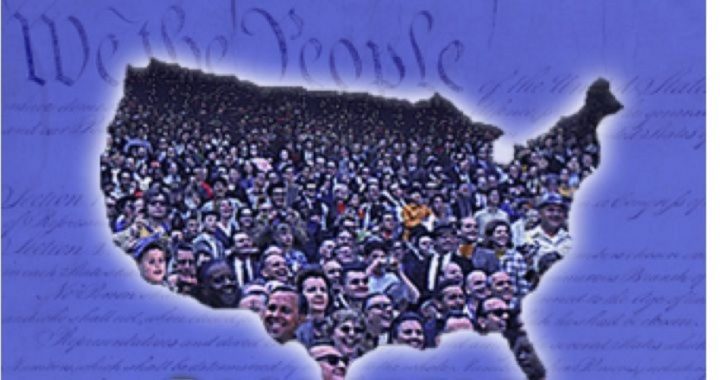
Opponents of the Electoral College can usually be categorized into three different groups: (1) those who believe more liberal candidates would do better under a direct, popular vote process; (2) those who simply do not understand why the president would be selected by some method other than by direct, popular vote; and (3) those who argue that the Electoral College is not working as the Founders intended.
In regard to the third objection, it is safe to assume that such a statement could be made about a large portion of the Constitution — even the amendments added since 1789, when the original document was ratified. After all, does anyone really believe that the authors of the 14th Amendment intended to legalize abortion on demand in all the states or impose a federal definition of marriage upon all the states, or that they wanted the children of illegal aliens to be automatic citizens of the United States?
The Constitution clearly states that only Congress has the power to declare war, yet presidents of both parties have sent Americans into foreign conflicts repeatedly, especially since World War II, without any such declaration of war by Congress. At best, members of Congress have given presidents open-ended “authorizations of force,” ceding their power to the White House as to when and how such force should be used. This is certainly not what the delegates at the Constitutional Convention intended.
Perhaps we can address the opposition of the first two groups mentioned in the opening paragraph by examining just what the Framers of the Constitution did intend when they devised the “Electoral College.”
First of all, the words “electoral college” do not even appear in the Constitution, although the Constitution says quite a bit about electors. The term “electoral college” began to appear shortly after presidential elections began, but it was not written into federal law until 1845.
Gouverneur Morris, the chairman of the Committee on Style that penned the actual words of our founding document according to the directions of the delegates of the Constitutional Convention, said fears of “intrigue” caused the delegates to reject the idea of Congress simply choosing a president. He added that giving the task of electing the president to some body other than Congress would enhance his independence, and help provide some check on the legislative branch.
Using direct popular election in selecting the president was not seriously considered, as there were simply too many problems with that idea. Under the federal system established by the Constitution, such a process was simply unworkable. After all, no other officer in the new general government would be chosen by a national election. Election of the president by direct, popular vote would raise many serious problems — such as what to do about recounts, voter fraud, and even the question of who would count the votes. No doubt a national election commission of some sort would be required, further weakening our federal system of government.
The major debate at the Convention was over how to choose members of Congress. The Great Compromise divided the legislative branch into two houses, with one (the Senate) having an equal vote for each state, regardless of population. This was considered so important to the smaller populated states that it is the one provision of the Constitution that can never be changed, even by constitutional amendment. On the other hand, in a bow to the larger populated states, the House of Representatives would indeed be apportioned by population.
The same concern of the smaller states was raised when it came to choosing the president. The Founders feared that the large states would control the presidential election. Therefore, it was decided that the number of electoral votes would be determined by combining the number of representatives of each state in the House, along with every state’s two senators. This way, the larger states would have more say, but would not be as dominant as they would be with direct, popular vote.
It should also be noted that Hillary Clinton did not “win” the popular vote, as both she and Donald Trump fell well short of a majority. It seems that those who desire a popular vote “winner” would also want a popular vote run-off election — which is clearly impractical.
In Federalist, No. 68, Alexander Hamilton explained that the electors would meet separately in each state, so as to limit the opportunity for intimidations or threats, and reduce the influence of corruption over the rest of the states found in any one state.
Once a state was assigned its number of electors, it would be up to each state’s legislature to determine the exact method of their selection. The Constitution is quite explicit on this point: “Each state shall appoint, in such manner as the legislature thereof may direct, a number of electors.”
While the Constitution left the actual selection method of a state’s electors up to each state’s legislative body, James Madison and Alexander Hamilton expressed dissatisfaction when Pennsylvania and Maryland opted to use a “winner-take-all” method. They had apparently assumed that each congressional district would select one elector, with the other two chosen directly by the state legislature. Hamilton even suggested that the Constitution be amended to require that each state allot its electoral votes by district. However, since the Civil War, all states have awarded all their electoral votes to the candidate who wins the most popular votes in their state (although only a plurality is required, not a majority).
Today, only two states use the congressional district method, with Maine’s legislature making that decision in 1972, followed by Nebraska in 1996. This year, Democrat Hillary Clinton took the most votes in Maine statewide, but because Republican Donald Trump won one of that state’s two congressional districts, he garnered one electoral vote from Maine.
Another assumption that the Framers apparently made was that each elector would use his own independent judgment in how to cast his vote. The comparison can be made to members of the House of Representatives. Although they are chosen by popular vote within their congressional districts (and not by some national popular vote), they are not “bound” to vote any particular way on any of the issues that come before them.
The Constitution provides that if no single candidate receives a majority of the electoral votes, then the House of Representatives shall choose the president. Because political parties or “tickets” were not anticipated, and because it was expected that no single candidate could receive a majority of the electoral votes, the Framers also expected that the election would often be determined in the House.
Political parties, not provided for in the Constitution, led to the 1800 election between Thomas Jefferson and John Adams being “thrown” into the House. The Constitution stipulated that if the House were given the duty to choose the president, each state’s House delegation would cast one vote, and once a candidate received a majority vote of the states, that person would be elected president. It took 36 votes before the House finally chose Jefferson. Following the 1824 election, in which no candidate managed a majority of the electoral vote, John Quincy Adams won over Andrew Jackson in the House. This was the last time that the House elected the president.
Were no person to win the majority of the electoral votes for vice-president, the 12th Amendment requires that the U.S. Senate choose the vice-president.
The 12th Amendment became necessary after the 1800 election because, although Jefferson edged out Adams in the electoral vote, he tied with his own party’s running-mate, Aaron Burr. Jefferson’s Republican Party (not the same as the modern party by that name, begun in 1854) was so organized that all 71 Republican electors voted for both Jefferson and Burr on every ballot. The Constitution originally provided that each elector vote for two candidates: The top vote-getter would become president and the person with the second-highest votes would become vice-president. When Burr refused to “step aside” for Jefferson, Alexander Hamilton, Jefferson’s political enemy, urged the Federalist Party members (Hamilton’s party and the party of President Adams) to abstain, and let the Republican members of Congress make the decision between the two Republicans. While Hamilton did not agree with Jefferson, he publicly called Burr a man “unfit” for the office. History records that Burr later killed Hamilton in a duel.
It is true that the Electoral College does not operate as it was meant to, but it does continue to serve one central purpose for which it was intended: It prevents one area of the country from dominating the selection of the nation’s chief executive. To win election as president, a candidate must get support from a broad coalition of states across the country.
This is a testimony to the wisdom of the Founding Fathers. Changing from the “winner-take-all” method now used by 48 of 50 states to a congressional district method would move us closer to the vision of the Framers of the Constitution; however, such a method would require either a constitutional amendment or a change in the laws by the legislatures of the several states.
Unfortunately, neither seems very likely. Generally speaking, those who prefer ditching the Electoral College in favor of direct popular vote consider the congressional district method of choosing electors even worse than the present “winner-take-all” system. They fear that a congressional district method would further reduce the influence of large urban areas of the country, such as Chicago, New York City, Philadelphia, and Los Angeles.
The results of the 2016 presidential election can, however, be expected to harden the resistance of Republicans to any system of direct popular vote. With 48 percent of the popular vote, Hillary Clinton would be taking the oath on January 20, 2017 as the 45th president of the United States.



